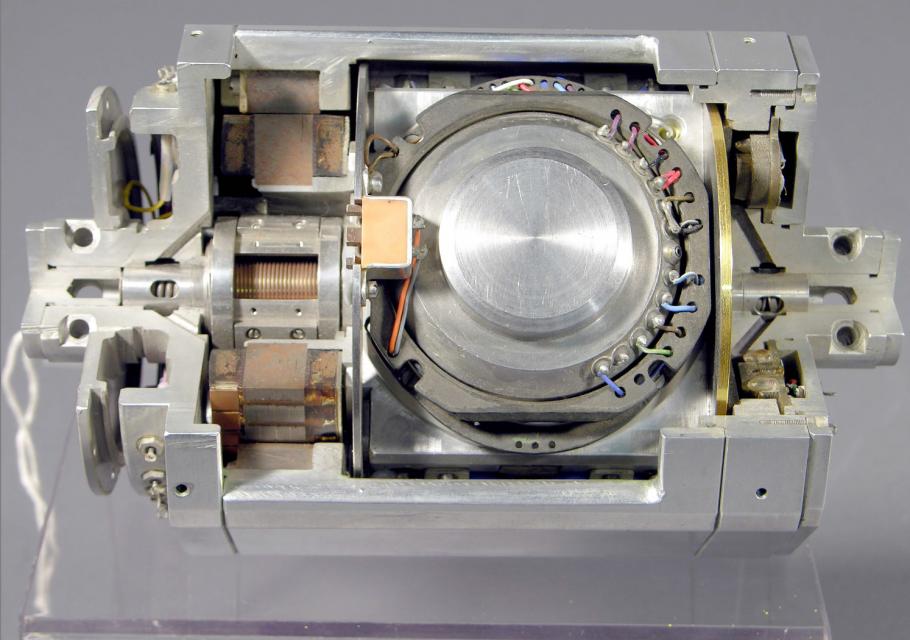If you don’t already own one, you’ve no doubt seen advertisements for them on television. I am referring to so-called “smartphones,” which can change the orientation of their display, from Portrait to Landscape, depending on how you hold them. They can do that because they contain a fingernail-sized chip inside, which senses the acceleration of gravity, and adjusts the display accordingly. Resourceful programmers have come up with a number of other applications, or “apps,” for these phones, which take advantage of the on-board ability to sense acceleration. If you only use a plain old-fashioned cell phone, you still have a number of these devices around you. Automobiles use them for airbag deployment, stability control, and braking systems. Videogame controllers use them. And digital cameras use them to stabilize an image. Because of their low cost, small size, and low power requirements, these devices have made their way into a myriad of consumer, industrial, and military products. They are called accelerometers, which measure acceleration, defined as a change in velocity. The force of gravity is also an acceleration (9.8 meters (32 feet) per second per second), which is what the smartphones sense when you rotate them.
I was reminded of this recently when the Museum added to its collection a suite of guidance devices from the AC Spark Plug Division of General Motors. Among them was a “25 PIGA” accelerometer used in the Titan II Intercontinental Ballistic Missile. Titan IIs were also used to launch ten Gemini space missions between March 1965 and November, 1966. The accelerometer was designed at the Instrumentation Laboratory at the Massachusetts Institute of Technology, under the direction of Charles Stark “Doc” Draper. The Laboratory, since 1970 known as the Charles Stark Draper Labortory, turned over the design to General Motors for construction. Similar devices were also used in the guidance system for the Apollo spacecraft. Because of the nature of air and space flight, accelerometers are found in nearly every missile guidance system, submarine and aircraft navigation systems, and in many spacecraft as well.
The 25 PIGA measured acceleration by means of a gyroscope, on which was mounted a weight that enabled it to act as a pendulum. As the gyro sensed acceleration, it turned or “precessed” at a rate proportional to the craft’s velocity, which is the mathematical integral of acceleration (try to remember your high school calculus courses). Thus the name: “Pendulous Integrating Gyro Accelerometer.” The “25” referred to the diameter of the case in which the gyro was housed: 2.5 inches. The device was about the size of a .5 kg (one-pound) coffee can, and weighed about 3.4 kg (7.5 pounds).
Accelerometers were hand crafted by highly skilled workers, who were chosen for their manual dexterity and ability to assemble precision mechanical components reliably. Some parts of missile guidance systems were made of Beryllium, a light and rigid metal that has to be handled carefully as its dust is toxic. The manufacturing process was carefully designed to ensure the safety of all who worked in the plant. Engineers at Delphi, the successor to the AC Spark Plug Division, spoke to me with great pride at the excellent safety record they maintained throughout the program. Needless to say, the accelerometers were not cheap. One published source estimates the initial cost of a complete Titan II guidance system at about $100,000 in early 1960s dollars, or perhaps a half a million dollars today. Although the Titan II ceased production years ago, similar hand-built accelerometers are in use in other ballistic missile systems that are still deployed.
Back to your cell phone: the accelerometers in them probably cost on the order of a few dollars—manufacturers are reluctant to break out the costs, for competitive reasons. And they are not made one at a time by workers highly skilled in mechanical arts, nor do they contain Beryllium. They are rather a wonderful example of a trend in mechanical engineering known as “Micro-Electro-Mechanical Systems” (MEMS): the ability to shrink mechanical devices similar to how electronic components have gotten smaller and cheaper over the years. Gyros that stabilize an image in a digital camera, for example, may be contained on a stacked chip about 5 millimeters by 5 millimeters (.2 inches by .2 inches) square. Some of them operate on a principle similar to the way the PIGA worked: they contain vibrating masses, which move at right angles to an acceleration, just as a spinning gyro precesses at a right angle to a force. So the next time you play with a Wii, take a photo with a digital camera, or fool around with your iPhone, think of “Doc” Draper and the skilled assembly workers at AC Spark Plug. Can you use your phone to guide a rocket to the Moon? Perhaps-- if “there’s an app for that.”

